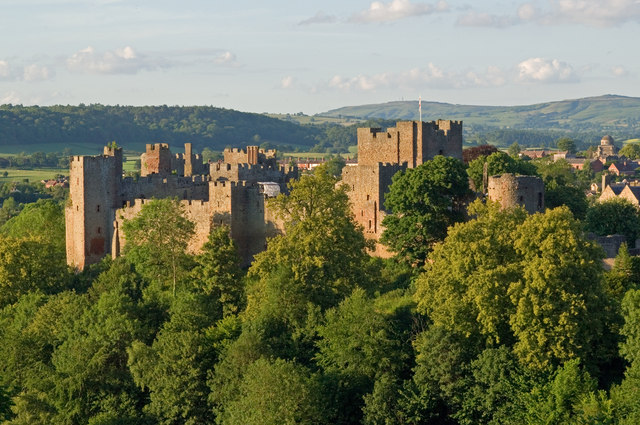I have always assumed that the poet A. E.
Housman was born in Shropshire, since his best
known work is a collection of poems called A Shropshire Lad. So, on researching him, I was surprised to
discover that he was actally born in Bromsgrove, Worcestershire, the county to
the east of Shropshire, and that he wrote the work while living in London. Housman once explained that Shropshire
was on his western horizon, which made him romantic about it, and that he did
not know the county well, so that some of the details about the county were
wrong or imaginary. However, this did
not stop him from describing what he saw in the distance in famously poetic
terms: "What are those blue remembered hills//What spires, what farms are
those?"
One feature of the horizon that Housman may
have discerned in the distance is Wenlock Edge, a limestone escarpment covered
in woodland looked after by the National Trust which, along with another geographical feature known as The Wrekin, featured in the poem On Wenlock Edge from A Shropshire Lad, in
which Housman describes a storm: "On Wenlock Edge the wood's in
trouble//His forest fleece the Wrekin heaves". Wenlock Edge, over 19 miles long, is a Site
of Special Scientific Interest due to its geology. At its north-eastern end is the picturesque
small town of Much Wenlock
with its Priory and Guildhall. The
Wrekin rises 407 metres above the Shropshire Plain and is visible from as far
away as Cleeve Hill near Cheltenham in
Gloucestershire. Another prominent
elevation in the area is the Long Mynd a bit further to the west. On several occasions I have passed these
landmarks on my way to Wales,
and they always strike me as a tantalising foretaste of the splendours of the
Welsh mountains.
 | |
| Towards The Wrekin - geograph.org.uk - 1086915. Photo by Paul Beaman, via Wikimedia Commons. |
In his piece about the stormy weather on
Wenlock Edge, Housman speculates that there would have been similar weather
"when Uricon the city stood".
This is a reference to the Roman town of Uriconium,
or Viroconium Cornoviorum, once the fourth largest Roman settlement in Britain. The remains of the settlement lie near the
present-day Wroxeter, a village near Shrewsbury,
and include an archway which formed part of the baths' frigidarium. The ruins are open to visitors and are run by
English Heritage.
 | |
| Viroconium Cornoviorum 08. Photo by Alastair Rae, via Wikimedia Commons. |
The River Clun, which wends its way through
the Shropshire countryside, lends its name to a number of villages as well as
the small town of Clun, with its ruined medieval castle (English Heritage), nestling in the
Shropshire Hills Area of Outstanding Natural Beauty. In A Shropshire Lad Housman describes the
sleepy nature of these settlements in the following whimsical verse:
"Clunton and Clunbury//Clungunford and Clun//Are the quietest
places//Under the sun." Another
larger town which features in the work is Ludlow,
nowadays known as much as a foodie mecca as for its impressive castle
overlooking the River Teme. Housman
writes about the town's fair: "The lads in their hundreds to Ludlow come in for the
fair//There's men from the barn and the forge and the mill and the
fold." There is a memorial to
Housman outside St Laurence's church in Ludlow
and the ashes of the poet, who died in 1936, are buried under the stump of a
cherry tree in the church grounds.
 | ||
| Ludlow Castle from Whitcliffe, 2011. Photo by Ian Capper, via Wikimedia Commons. Map of Shropshire. |
No comments:
Post a Comment